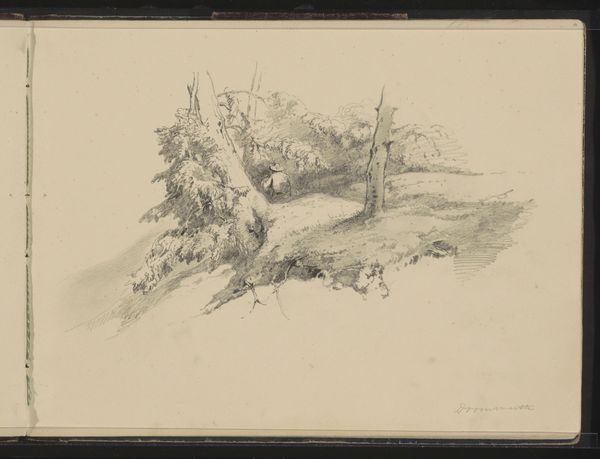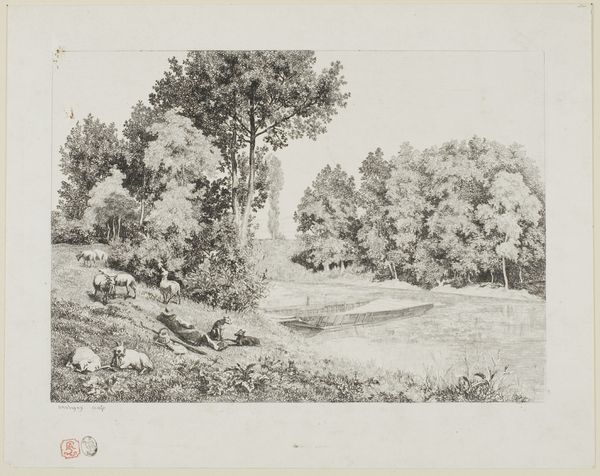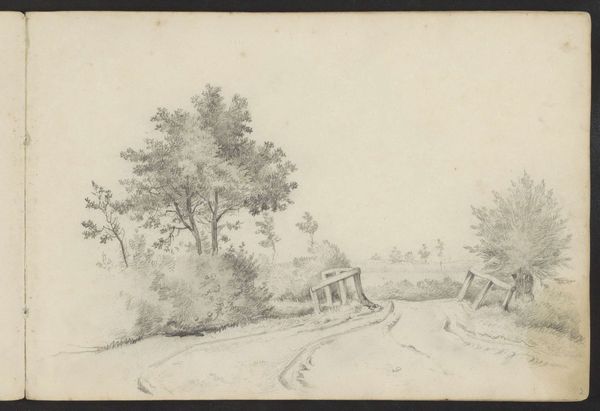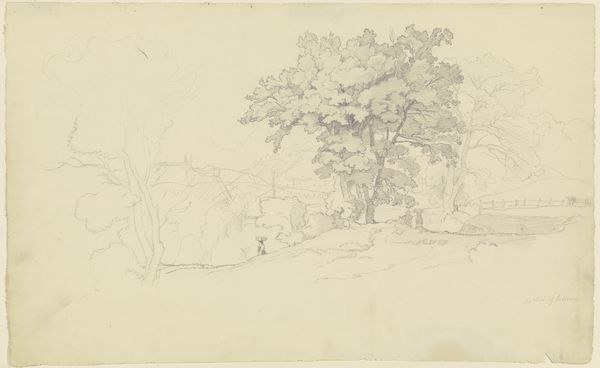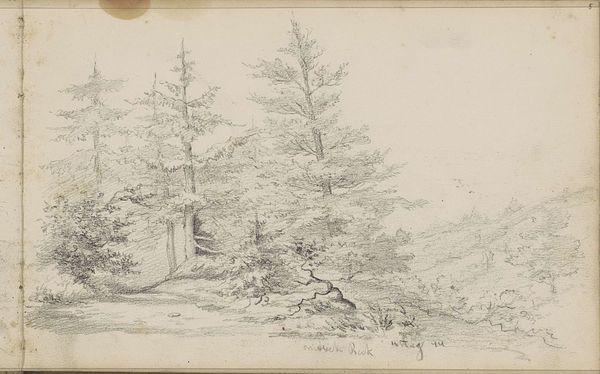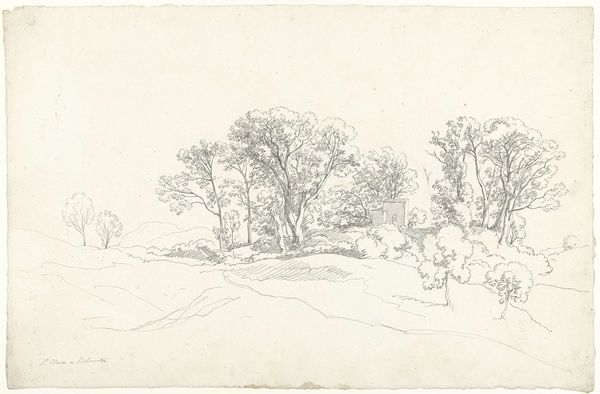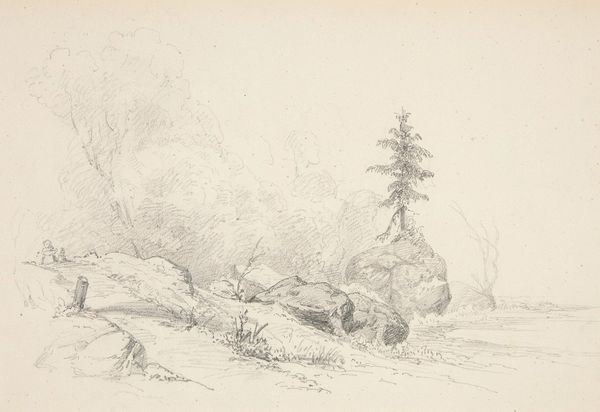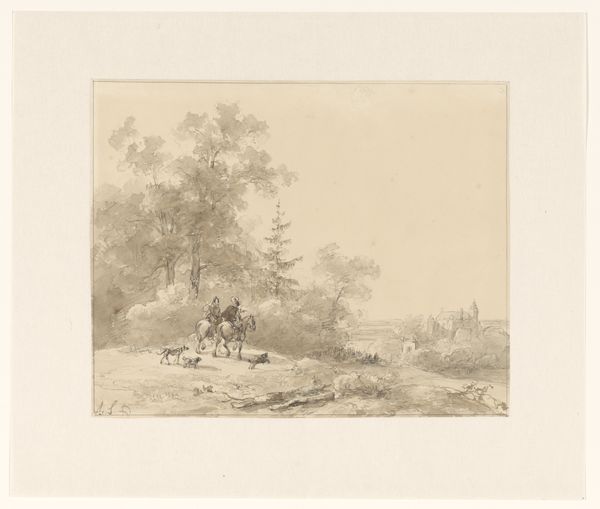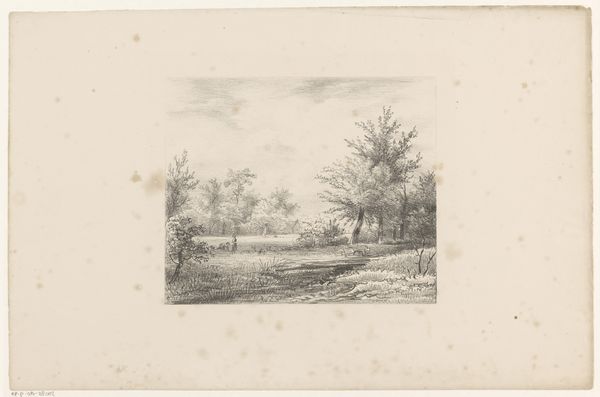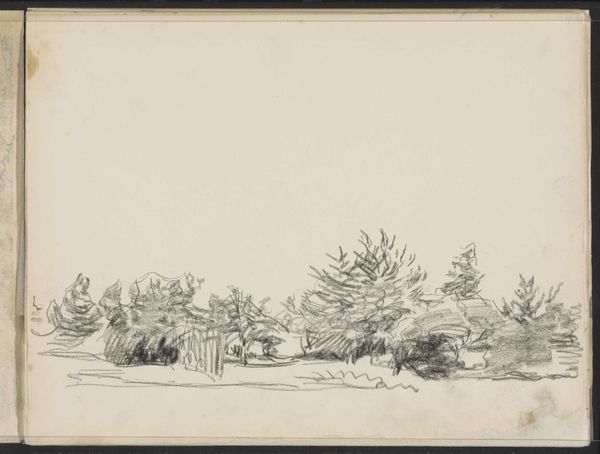
drawing, pencil
#
drawing
#
pencil sketch
#
landscape
#
pencil
#
realism
Dimensions: height 210 mm, width 275 mm
Copyright: Rijks Museum: Open Domain
Editor: This is "Huis bij Malling Abbey," a pencil drawing from 1858. The artist is unknown. It feels… peaceful. Sort of unassuming in its quiet depiction of the countryside. What's your take on it? Curator: Well, considering the social and political landscape of 1858, we need to remember that even seemingly innocuous landscape drawings held a certain political weight. Think about the burgeoning national identities, and the way art was used to define "place" and belonging. Editor: How so? It looks just like a casual sketch. Curator: On the surface, yes. But consider the rise of Realism in art during this period. There's a deliberate turn towards portraying the everyday, the local. Landscape becomes less about the idealized sublime, and more about a specific place. What is depicted then and how is influenced by politics. This drawing could be read as an attempt to document or even celebrate the unique character of Malling Abbey, and a subtle assertion of identity. Editor: So you think the very act of choosing this scene, this unassuming building nestled amongst the trees, has political implications? Curator: Absolutely. The art world wasn't operating in a vacuum. The focus on rural life often served to valorize certain aspects of society. Was there a dominant idea about landscape paintings during that era? Is that related to this one? Editor: That makes a lot of sense. I’d never considered landscape art could have such political context. Curator: Exactly. It shows how crucial it is to consider the context surrounding a work's creation to really understand its full message. It gives this seemingly simple drawing a whole new depth.
Comments
No comments
Be the first to comment and join the conversation on the ultimate creative platform.
